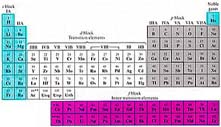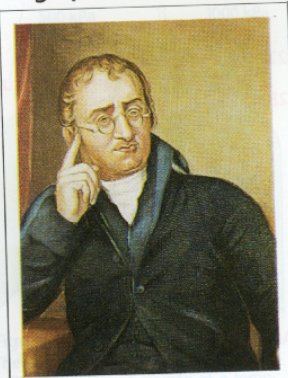

By: Linda A. Head
Introduction | Task | Process | Resources | Evaluation | Conclusion
The Periodic Table of Elements is very complex. The elements are not randomly assigned a location. Their period number and column name tell us a great deal of information. The location in the table indicates the exact number of protons and electrons, as well as the approximate mass, density, boiling point, and melting point. We can also use an element's location to deduce the type of compounds it will form and how it would be found in nature.
 Pretend that you are a scientist way back in history.
Today's Periodic Table has not been developed yet. Scientist all over the world are
arguing about how the table should be organized. You and your scientific team have
just discovered a new element and as a result you want to design an element table that
includes this new discovery. You are sure that you will be able to revolutionize
chemistry by designing the table to end all tables. Yours will be the pinnacle work
in the field. Full off confidence and naiveté, you head of to do what no man (or
woman) has done before.
Pretend that you are a scientist way back in history.
Today's Periodic Table has not been developed yet. Scientist all over the world are
arguing about how the table should be organized. You and your scientific team have
just discovered a new element and as a result you want to design an element table that
includes this new discovery. You are sure that you will be able to revolutionize
chemistry by designing the table to end all tables. Yours will be the pinnacle work
in the field. Full off confidence and naiveté, you head of to do what no man (or
woman) has done before.
Introduction | Task | Process | Resources | Evaluation | Conclusion
During the course of this assignment you will design your own periodic table. You will then have the oportunity to evaluate and modify this design based on modern theory. Finally you will compare and contrast your table with the real Periodic Table of Elements in order to evaluate your work and better understand the organization of the modern table.
Introduction | Task | Process | Resources | Evaluation | Conclusion
Part 1
Part 2
Part 3
Introduction | Task | Process | Resources | Evaluation | Conclusion
Interactive periodic table sites:
http://www.chemicalelements.com/
http://www.shef.ac.uk/~chem/web-elements/
Introduction | Task | Process | Resources | Evaluation | Conclusion
Because there is no right answer to the way you design your table, you will be evaluated on how well you can justify your means of organization. There must be a scientific basis for your reasoning (25%). In addition, your work should be well thought out and show real effort (25%). The goal of the assignment is to gain insight into the development of the modern table and to add meaning to its structure. Therefore, you will be required to demonstrate an understanding of today's table through comparison with your table (50%). I will look for clarity of thought and idea, as well as, organization and follow through.
Introduction | Task | Process | Resources | Evaluation | Conclusion
With the completion of this project should come the understanding of the organization behind the seamingly random placement of the elements in the Periodic Table.
Introduction | Task | Process | Resources | Evaluation | Conclusion
Created By: Linda A. Head School: Lakeland High School
Subject: Chemistry Grade: 11 Date: 9/28/99
N.Y.S Math, Science & Technology Standard #4
Students will understand and apply scientific concepts, principles,and theories pertaining to the physical setting and living environment and recognize the historical development of ideas in science.